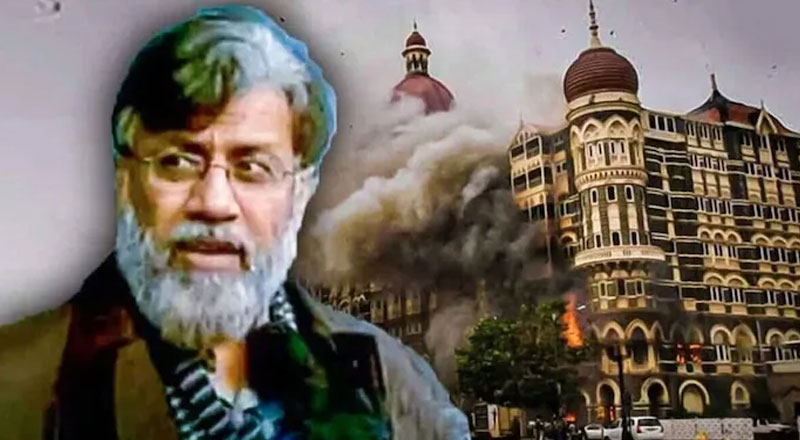A Wound That Still Burns
On the evening of November 26, 2008, India witnessed one of the darkest chapters in its history — the 26/11 Mumbai terror attacks. The nation watched in horror as ten heavily armed terrorists unleashed coordinated attacks across Mumbai, targeting iconic landmarks like the Taj Mahal Palace Hotel, Chhatrapati Shivaji Terminus, and the Jewish center at Nariman House. The siege lasted four days and left more than 170 people dead, including civilians, police officers, and foreign nationals.
The attackers, trained and supported by the Pakistan-based terror outfit Lashkar-e-Taiba (LeT), had infiltrated India via sea routes, armed with GPS systems and fake IDs. Only one, Ajmal Kasab, was captured alive. The others were killed during the siege. The memories of 26/11 are etched deep in the national psyche — as a symbol of loss, fury, and a firm resolve to bring every perpetrator to justice.
Today, more than 16 years later, one of the key conspirators is finally being brought home to face the law.
Tahawwur Rana: The Man Behind the Curtain
Tahawwur Hussain Rana, a Pakistani-origin Canadian businessman and a former Pakistani Army doctor, is known to have played a pivotal role in enabling the 26/11 attacks. A close associate of David Coleman Headley (also known as Dawood Gilani), Rana provided critical logistical and cover support to facilitate reconnaissance missions of the targets in Mumbai. He operated an immigration services company in Chicago — First World Immigration Services — which was used as a front by Headley to set up a fake office in Mumbai.
Between November 11 and 21, 2008, just days before the attacks, Rana himself traveled to Mumbai via Dubai and stayed at the Renaissance Hotel in Powai. Investigators claim this trip was to review final preparations. Headley, with Rana’s assistance, had visited India five times between 2007 and 2008 under a false identity, mapping out key targets later hit by the LeT terrorists.
Both Rana and Headley were reportedly in direct communication with Major Iqbal, an officer in Pakistan’s Inter-Services Intelligence (ISI), who is believed to have coordinated strategic aspects of the attacks.
The Long Road to Extradition
India began formal proceedings to extradite Tahawwur Rana in June 2020, following a detailed diplomatic and legal push. In December 2019, a formal diplomatic note was submitted, and by mid-2020, India had requested his provisional arrest.
After prolonged legal arguments, the U.S. judiciary — including its Supreme Court — denied Rana’s appeal to block his extradition. In February this year, former U.S. President Donald Trump publicly confirmed Rana’s extradition, stating, “He is going back to India to face justice.”
High-Security Operation Underway
Sources confirm that Rana is currently aboard a special flight to India, escorted by a team of Indian intelligence and investigative officers. The aircraft is expected to make a discreet halt at an undisclosed location before landing in New Delhi early tomorrow morning.
Special security arrangements have been made at high-security jails in both Delhi and Mumbai in line with US court recommendations. Upon arrival, Rana will be presented before a special NIA court in New Delhi. Initial custody will remain with the National Investigation Agency, and later, he will be transferred to Mumbai for further interrogation and legal proceedings.
The entire extradition and transfer operation is being supervised at the highest levels by National Security Advisor Ajit Doval and officials from the Ministry of Home Affairs.
What’s Next: Justice Awaits
With Rana’s arrival, India moves one step closer to unraveling the full chain of command behind the 26/11 attacks. The NIA is expected to question him on his interactions with LeT, the ISI, and his communications with Headley and Major Iqbal. His testimony could provide fresh leads and reinforce India’s case against Pakistani involvement.
For the families of the victims and a nation that still mourns the tragic events of that November night, Rana’s extradition is not just a legal victory — it’s a symbolic moment of long-delayed justice. And while the road to full accountability remains long, this is a significant milestone in India’s unrelenting pursuit of justice.
(With inputs from agencies)





